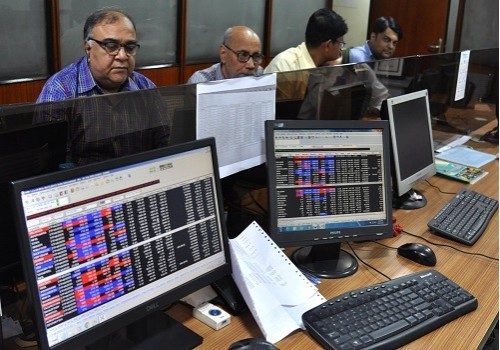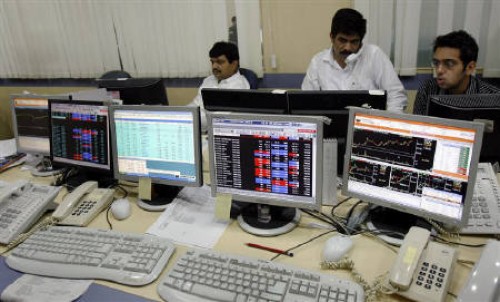Monthly Debt View for April 2023 by Pankaj Pathak, Quantum AMC

Follow us Now on Telegram ! Get daily 10 - 12 important updates on Business, Finance and Investment. Join our Telegram Channel
Below Monthly Debt View for April 2023 by Pankaj Pathak, Fund Manager- Fixed Income, Quantum Mutual Fund
Monthly Fixed Income Commentary
In March, Indian bond yields easedby 5-20 basis points across the maturity curve. The benchmark 10-year government bond (Gsec) yield fell by 12 basis pointsto end the month at 7.31%.
The rally in the Indian bond market was primarily in response to a sharp drop in the US treasury yields. The 10-year US treasury yield fell by 42 basis points in March from 3.91% to 3.49% as financial stability concerns resurfaced in the US and Europe.
The failure of the Silicon Valley Bank and the Signature Bank in the US and the collapse of Credit Suisse in Europe triggered a global risk-off sentiment. It significantly lowered the rate hike probabilities in the advanced economies and fuelled a sudden bond rally. Indian bond yields followed global yields on the way down.
The short-term money market yields moved up sharply at the start of the month dueto tax outflows and a lack of demand ahead of the financial year closing. However, rates came down sharply towards the month end as the year-end government spending eased liquidity in the banking system.
During the month, the yield on 3 months commercial papers (CPs) of AAA-rated PSUs fell from ~7.5% to 7.15%.
Monetary Policy
In the first bi-monthly monetary policy of FY24, the Monetary Policy Committee (MPC) of the RBI left the policy repo rate unchanged at 6.5%. Consequently, the SDF (Standing Deposit Facility) rate remained unchanged at 6.25%, and MSF (Marginal Standing Facility) rate at 6.75%
The policy stance is retained as ‘withdrawal of accommodation’ to ensure that inflation progressively aligns with the target while supporting growth.
The RBI also lowered its CPI inflation estimate for FY24 from 5.3% to 5.2%; while keeping its GDP growth forecast the same at 6.5%.
The hawkish tone in the February policy statement and the surprise jump in Inflation in the last month had fuelled an expectation of a rate hike in this policy.
Thus, a ‘no rate hike’ was a positive surprise.
The governor made special efforts to sound hawkish by singling out this rate pause as a one-time deviation from its broader monetary policy path. Despite the use of Phrases like ‘for this meeting only’ and ‘a pause not pivot’, the bond market seems to have read it differently.
Bond yields fell by around 10 basis points post-policy announcement with the 10-year government bond yield falling below 7.2% intraday.
The governor made repeated references to the potential impact of the effective 290 basis points of rate increases in the last 1 year. This, along with the downward revision in inflation, indicates that the RBI has probably reached its destination in terms of the level of the Repo Rate and will hike rate only if the inflation path moves up significantly. The pause also seems to be driven by global financial stability issues.
Rate Outlook
Going ahead, the bond market should price for an extended rate pause with a terminal repo rate at 6.5%. This should openup space for Government bond yields to go down. We would expect the 10-year government bonds to trade between 7.00%-7.40%.
At a current yield of 7.2%, government bonds are now offering a positive real yield of about 200 basis points based on 4 quarter-ahead inflation estimate of 5.2%.
Also, with the rate hiking cycle nearing its end and inflation trending down, the probability of capital gains in long-term bonds has increased. Investors with over 2-3 years of investment horizon should allocate to dynamic bond funds which tend to benefit in this kind of interest rate environment.
Dynamic bond funds have the flexibility to change the portfolio positioning as per the evolving market conditions. This makes dynamic bond funds better suited for long-term investors in this volatile macro environment.
Investors with shorter investment horizons and low-risk appetite should stick with liquid funds. Tightening liquidity conditions will continue to put upward pressure on short-term rates and is in turn positive for short-term debt fund categories like the liquid fund. We would expect further improvement in the return potential of these categories as interest accrual on short-term debt instruments has risen meaningfully.
Since the interest rate on bank saving accounts are not likely to increase quickly while the returns from the liquid fund are already seeing an increase, investing in liquid funds looks more attractive for your surplus funds.
Investors with a short-term investment horizon and with little desire to take risks should invest in liquid funds which own government securities and do not invest in private sector companies which carry lower liquidity and higher risk of capital loss in case of default.
Above views are of the author and not of the website kindly read disclaimer










Tag News

We anticipate immense potential benefits from the upcoming Sovereign Gold Bond Tranche in FY...



More News

Press Note: Alpha Strategist March 2021 - Investment Strategy across Asset Classes By Ashish...









